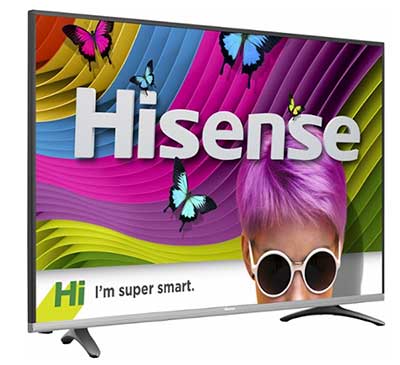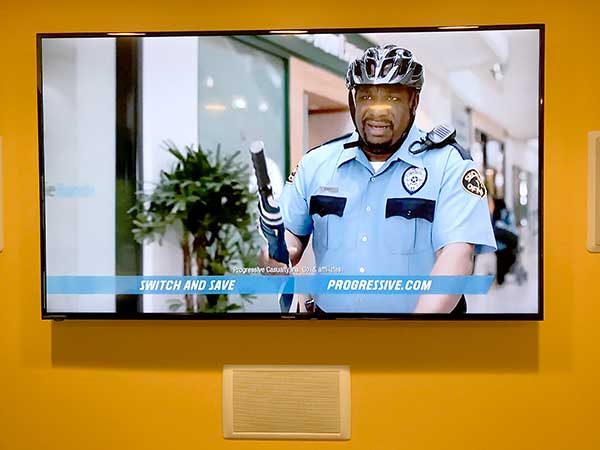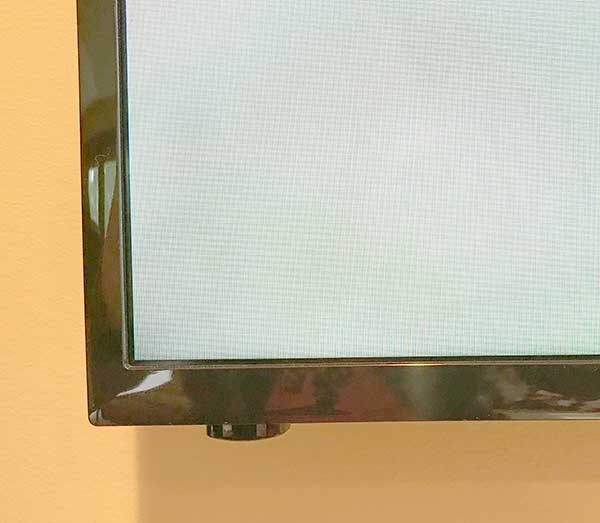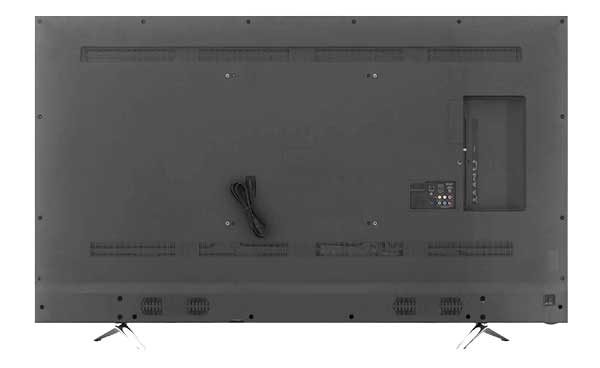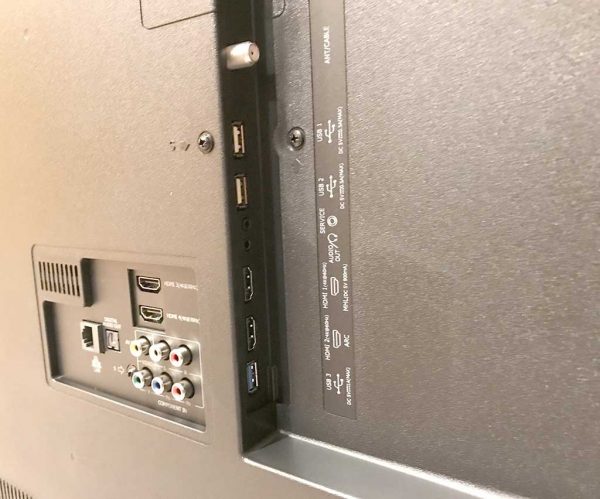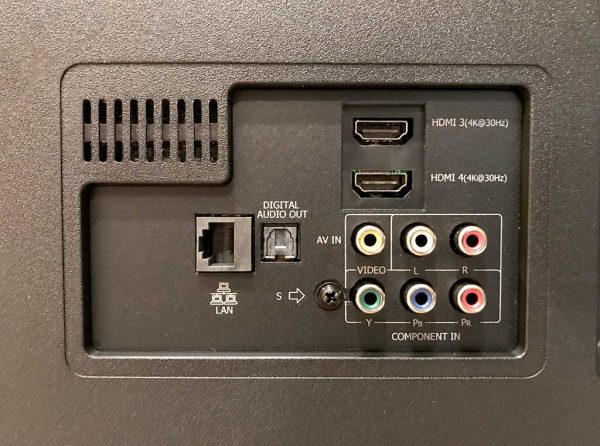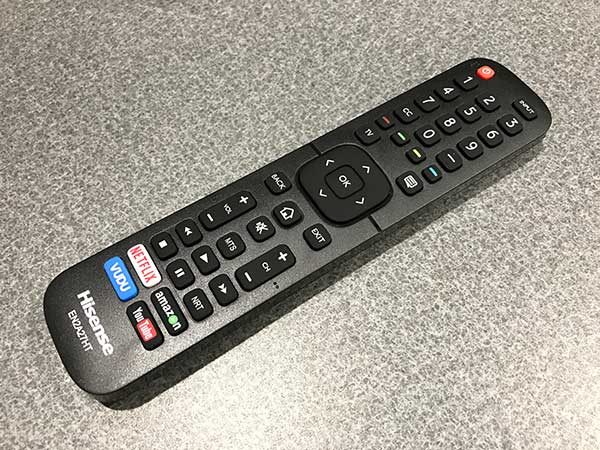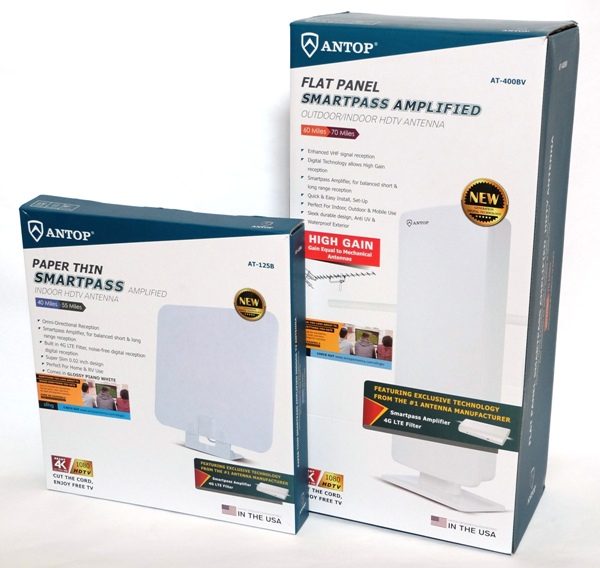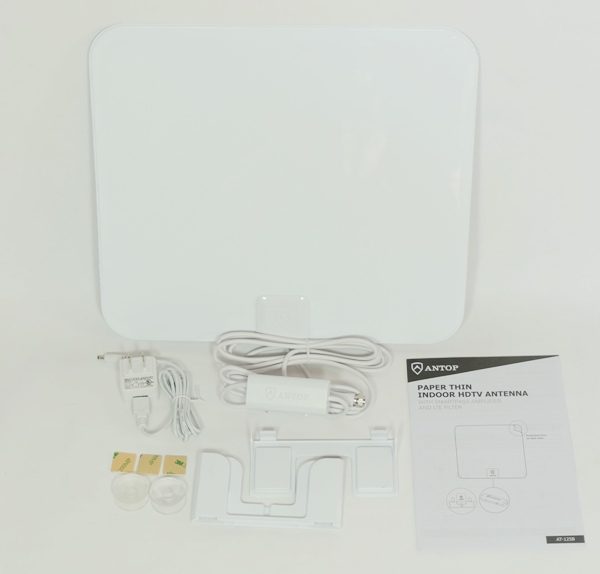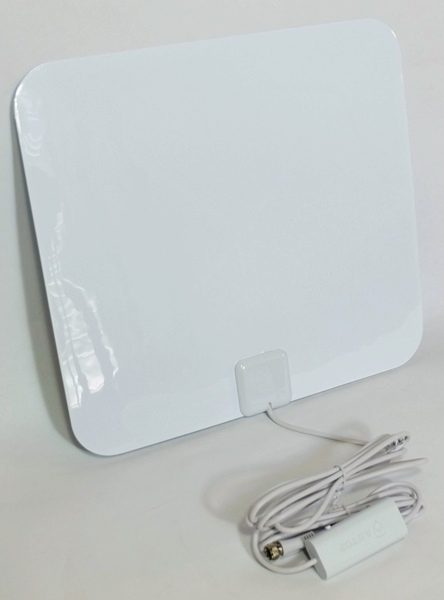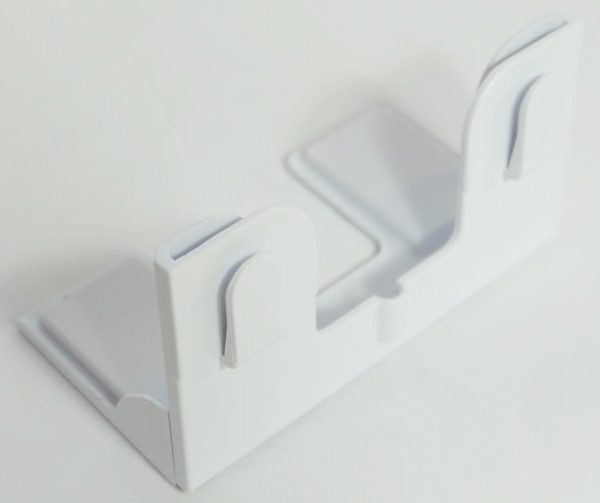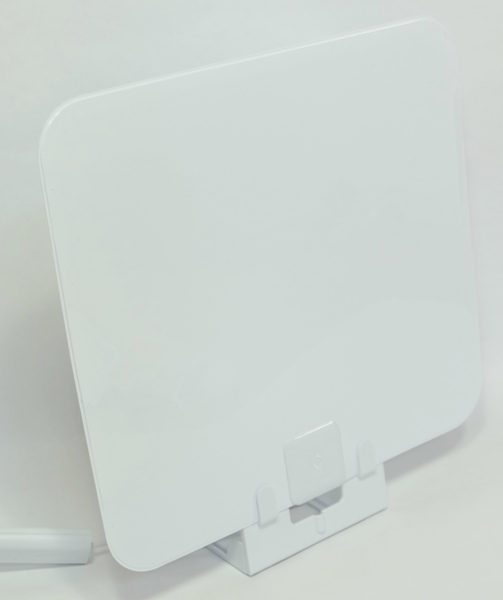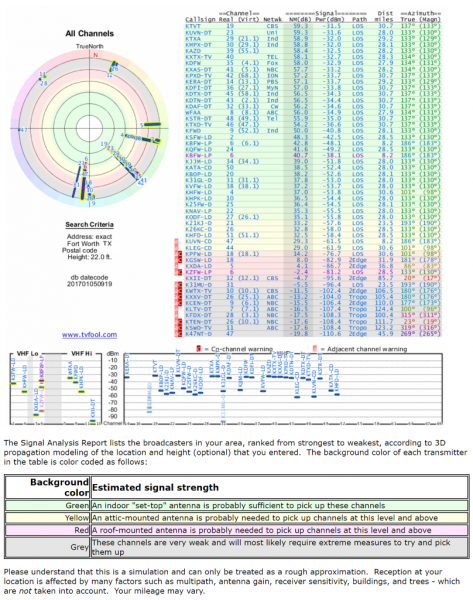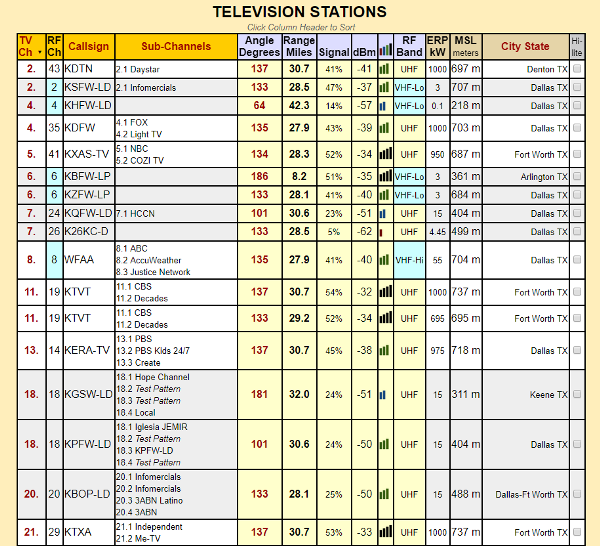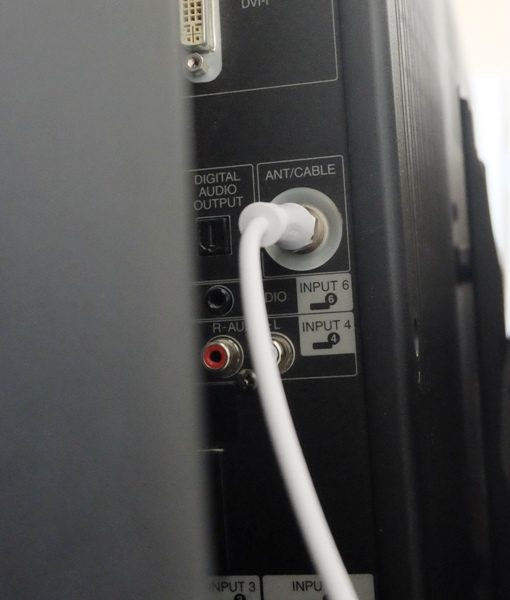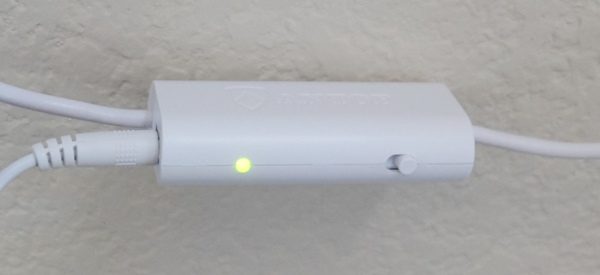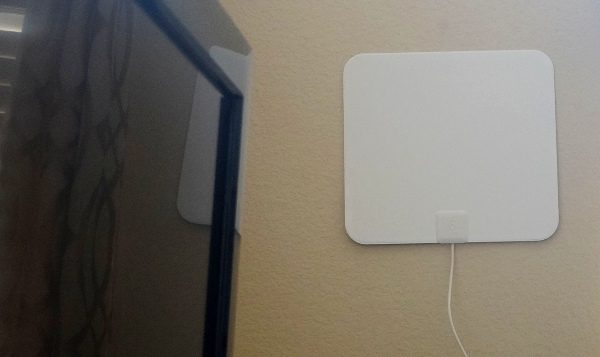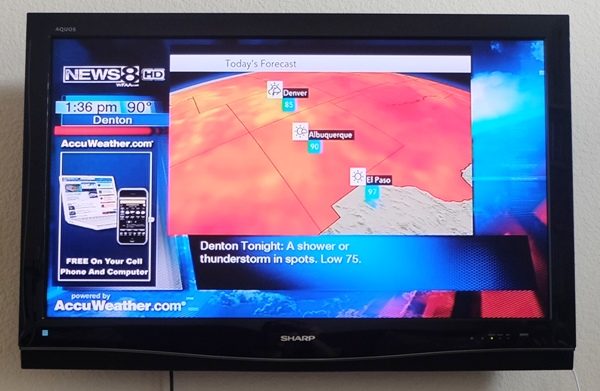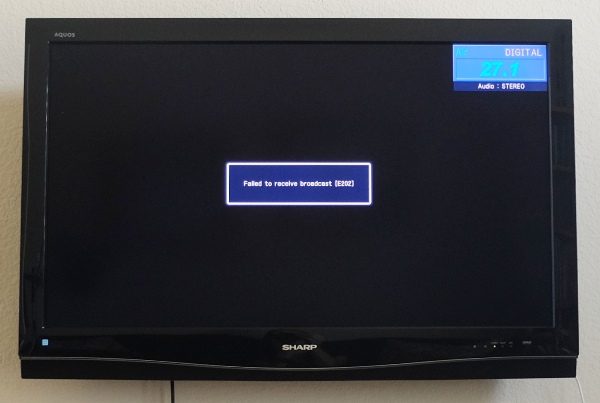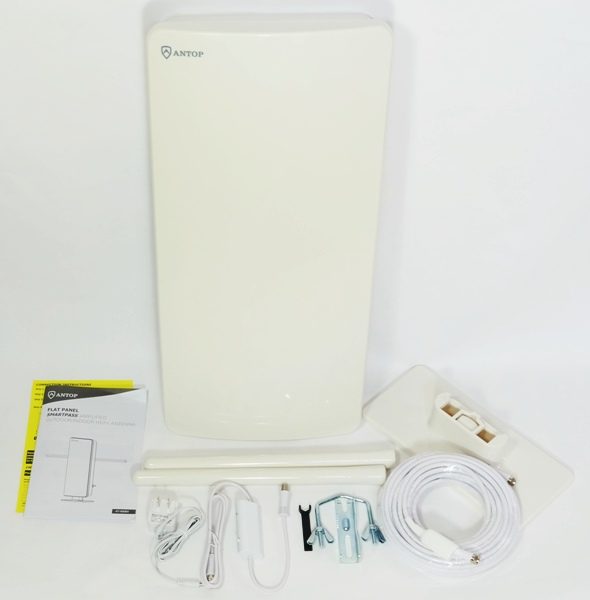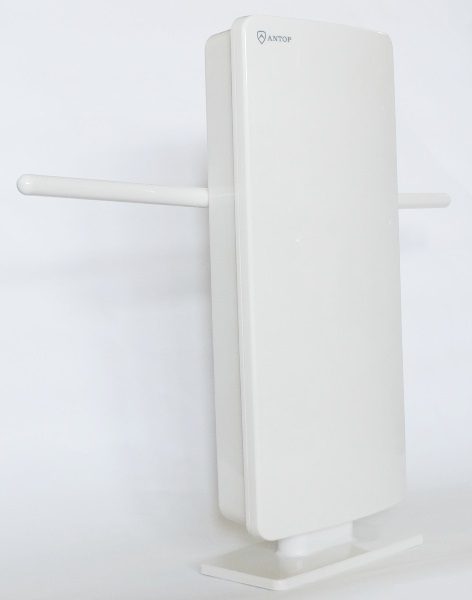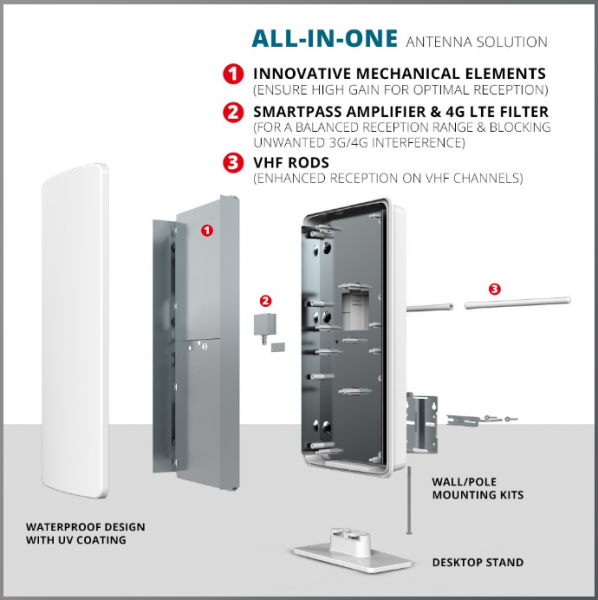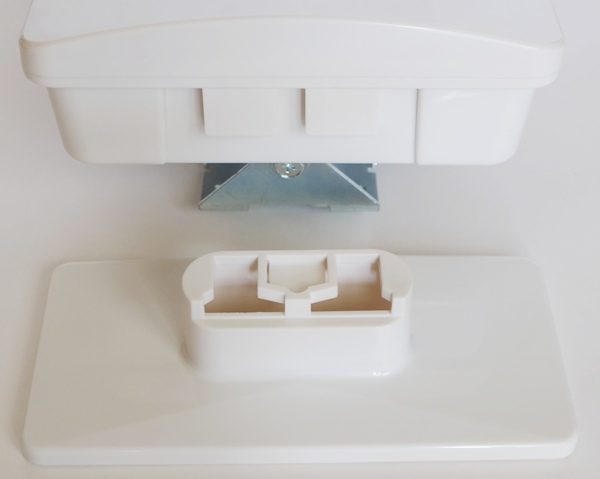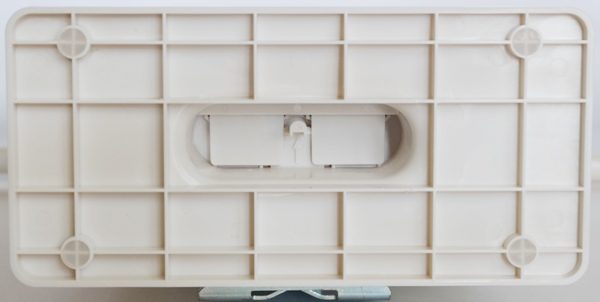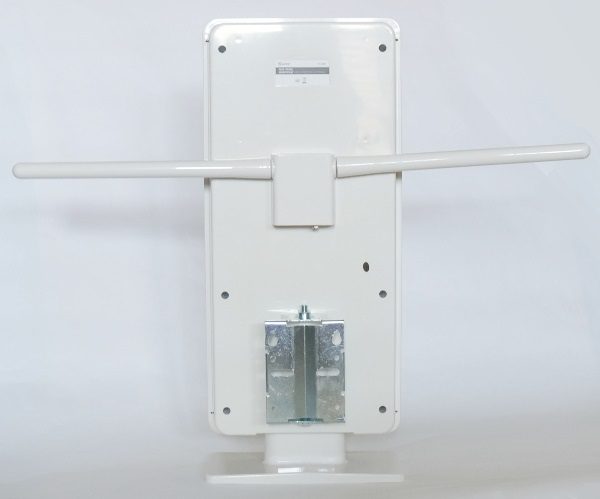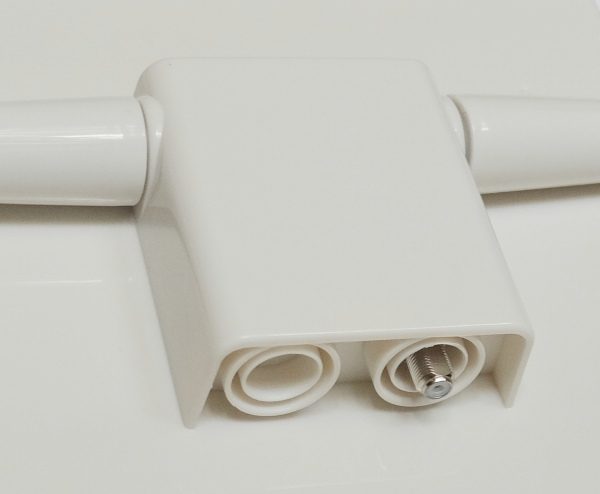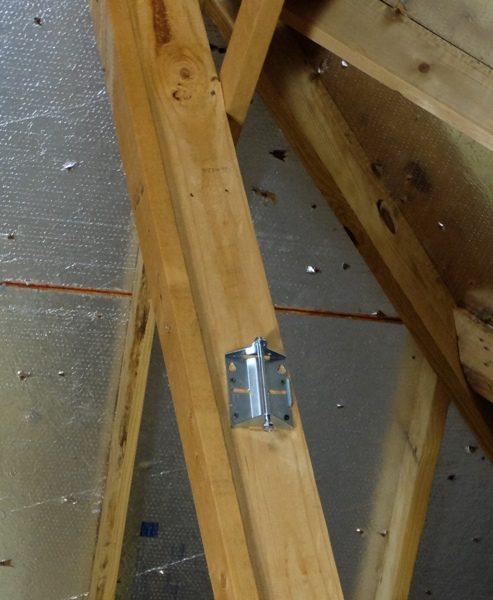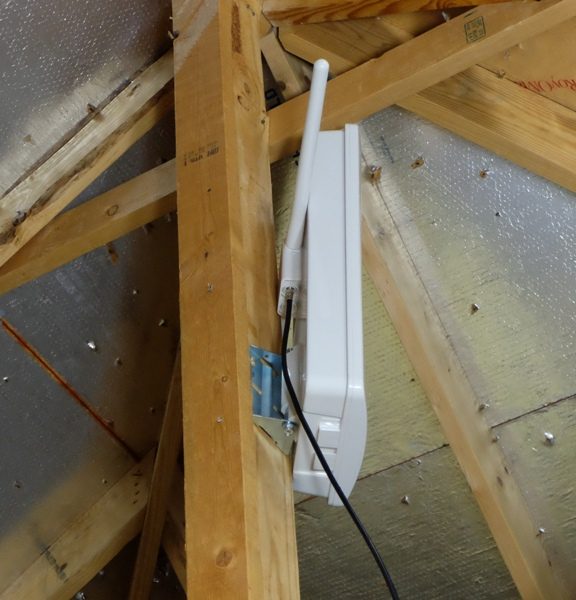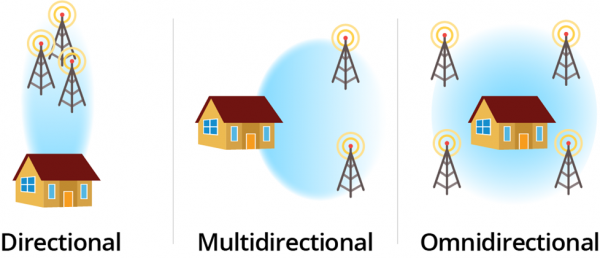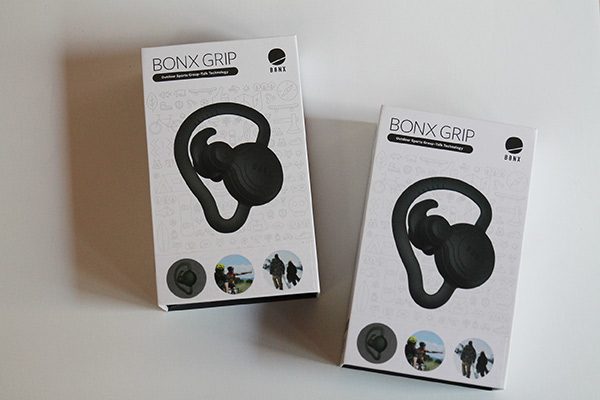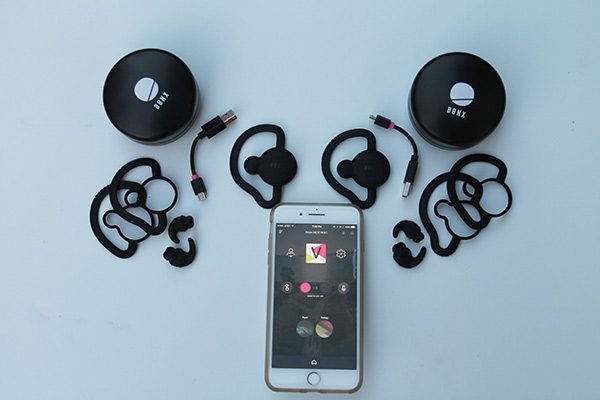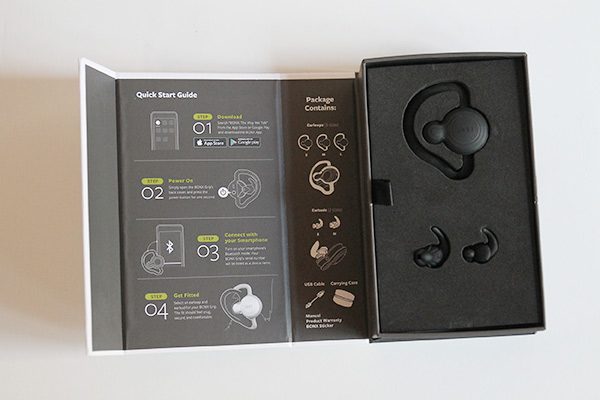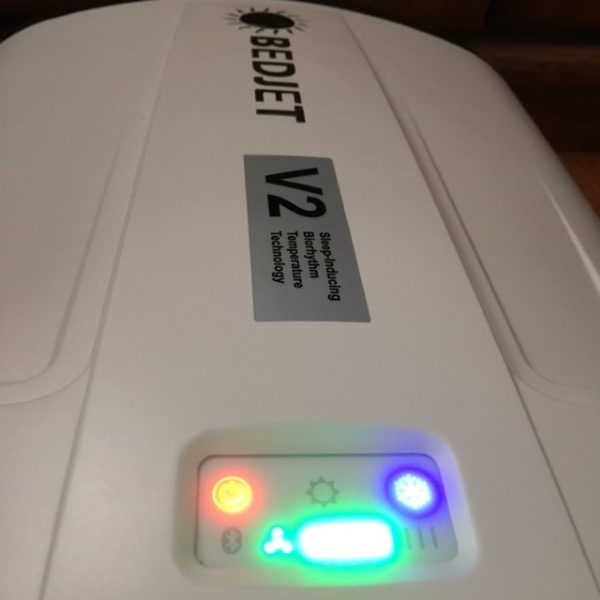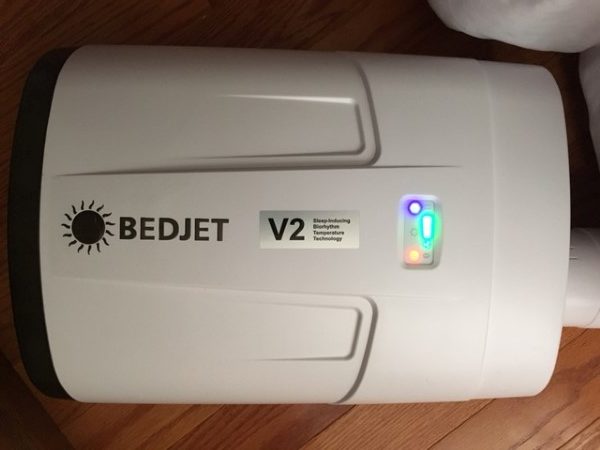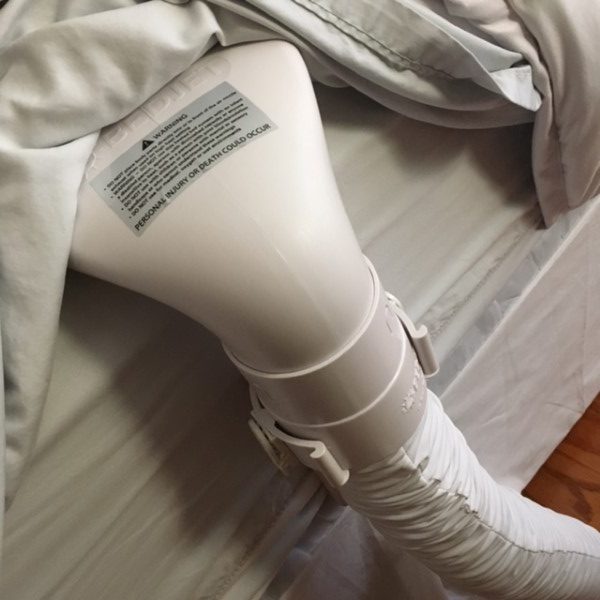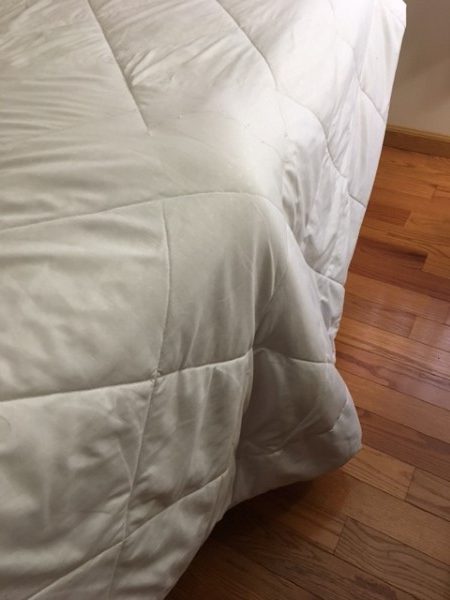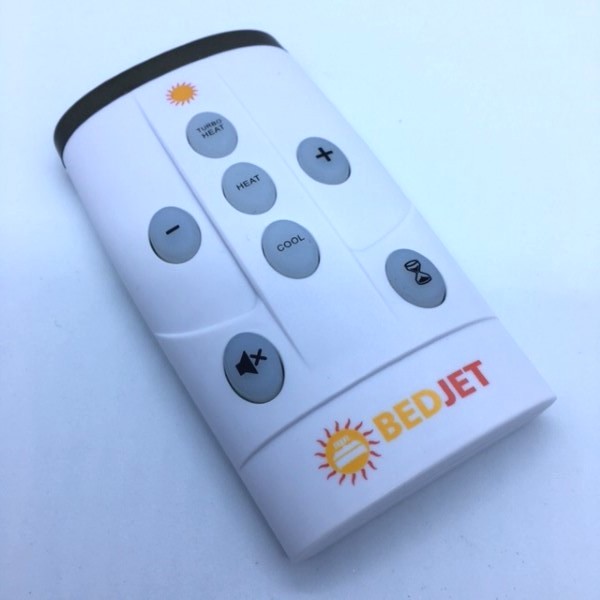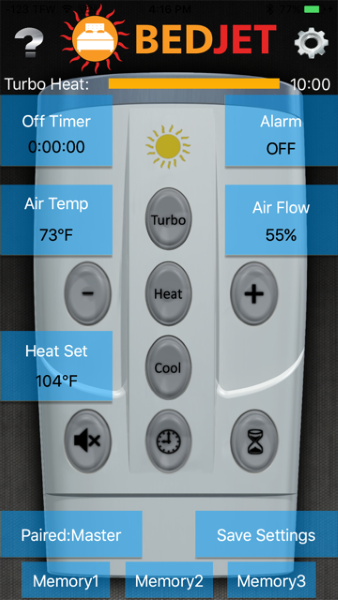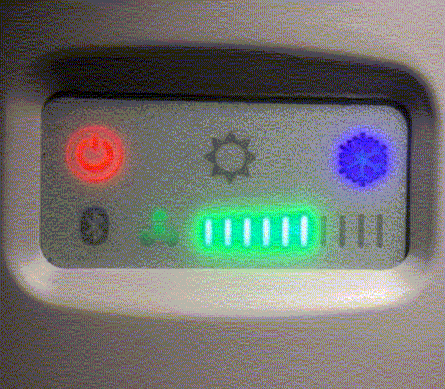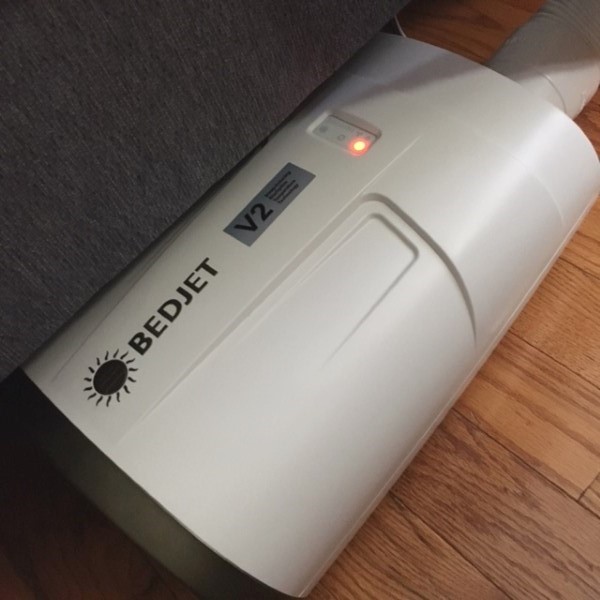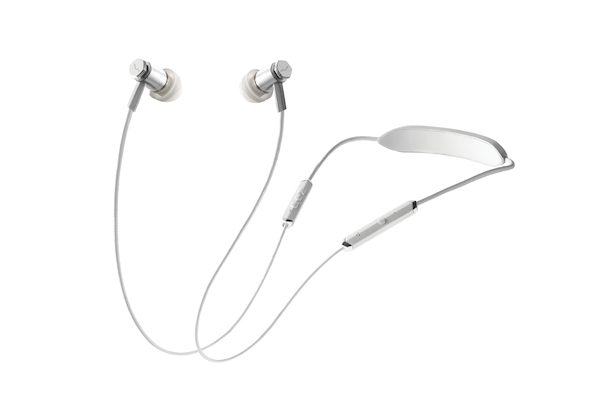 Consumers’ personal preference and manufacturers’ desire to offer differentiated products has lead to an assortment of earphone styles: earbuds, in-ear headphones, in-ear-canal headphones, etc. If the different ways earphones are connected to the audio source or supported by the body are considered then the list stacks multiplicatively. So when V-MODA recently announced the Forza Metallo Wireless as the world’s first ergonomic neckband headphones I was intrigued. Val Kolton, V‑MODA CEO and I have similar opinions about other in-ear wireless headphone designs; he says, “They either look like unsightly massive ‘plastic space ring around the collars’, Frankenstein bolts that will not stay in your ears or separate earbuds that are quickly lost, have reception issues and need a dongle or case.” So what makes the Forza Metallo Wireless different? Read on to see what I think!
Consumers’ personal preference and manufacturers’ desire to offer differentiated products has lead to an assortment of earphone styles: earbuds, in-ear headphones, in-ear-canal headphones, etc. If the different ways earphones are connected to the audio source or supported by the body are considered then the list stacks multiplicatively. So when V-MODA recently announced the Forza Metallo Wireless as the world’s first ergonomic neckband headphones I was intrigued. Val Kolton, V‑MODA CEO and I have similar opinions about other in-ear wireless headphone designs; he says, “They either look like unsightly massive ‘plastic space ring around the collars’, Frankenstein bolts that will not stay in your ears or separate earbuds that are quickly lost, have reception issues and need a dongle or case.” So what makes the Forza Metallo Wireless different? Read on to see what I think!
Unboxing
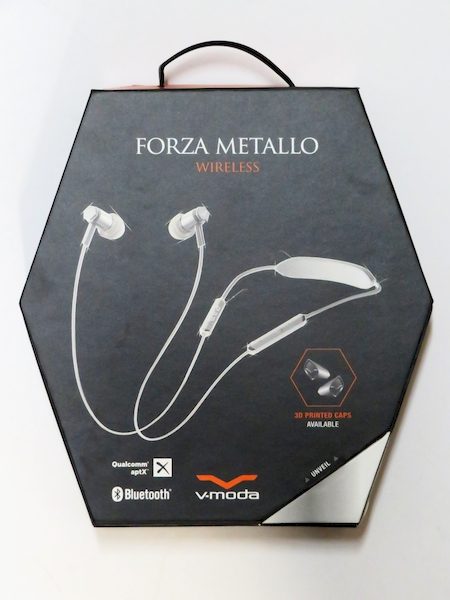
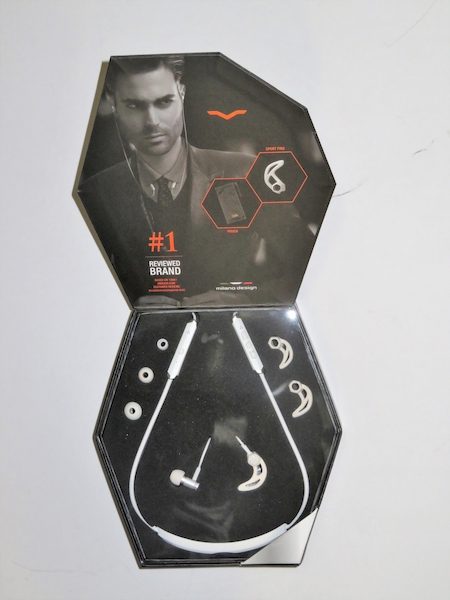
The V-MODA Forza Metallo Wireless comes in a clam-shell display box with a see-through compartment so that the actual product can be seen while still in a retail environment. The box shows the unique features of the Forza Metallo neatly presented in the protective foam insert:
- The titanium wire spring ergonomic neckband
- The two microphones located on the left and right of the neckband’s ends
- Three sizes of ActiveFlex Sport Fins (Similar to Jaybird Secure-fit ear fins)
- four sizes of silicone ear tips (4 of each size, just in case you lose one)
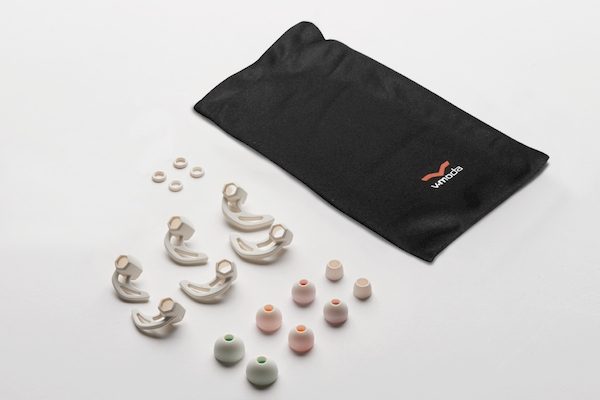
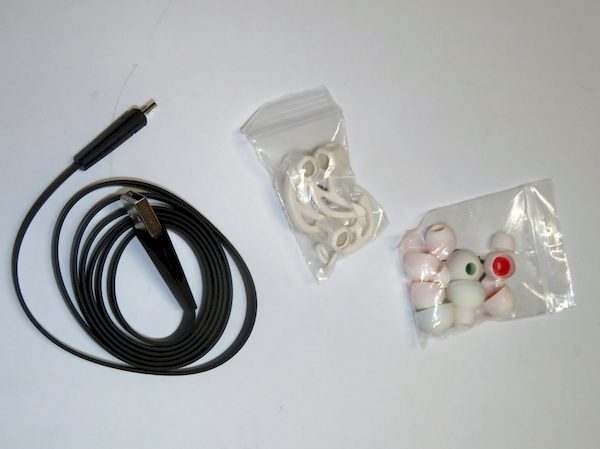

Underneath the foam packaging is a quick start guide, the additional supply of sport fins and silicone ear tips, a user’s manual, a warranty card, a nylon cinch case and a lay flat USB charging cable.
Design
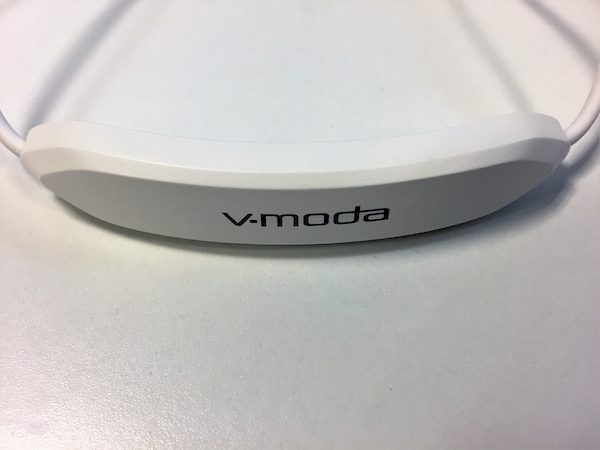
The earphones are a good example of how to tastefully combine style, design, and functionality. For instance, the rear of the earphones contains the battery, antenna and charging port. The grouping of the larger battery and antenna in the largest part of the unit allows the largest capacity and antenna range possible while including the company logo on the back allows the manufacturer to promote their brand, but not at the expense of being obtrusive when facing another individual.
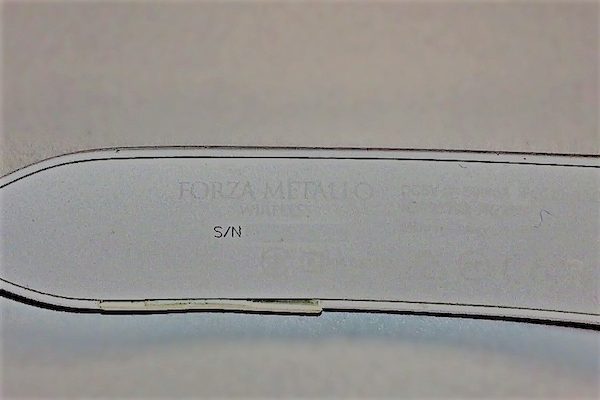
The style-crushing manufacturing info, CE marking, and other information is white ink on white plastic on the inside of the rear to make it less obtrusive (only the serial number is in black ink).
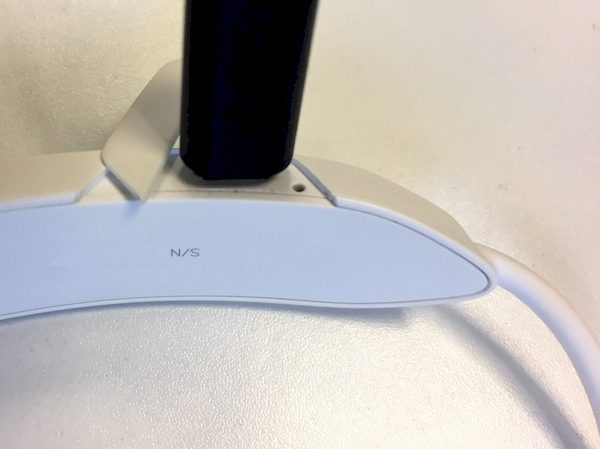
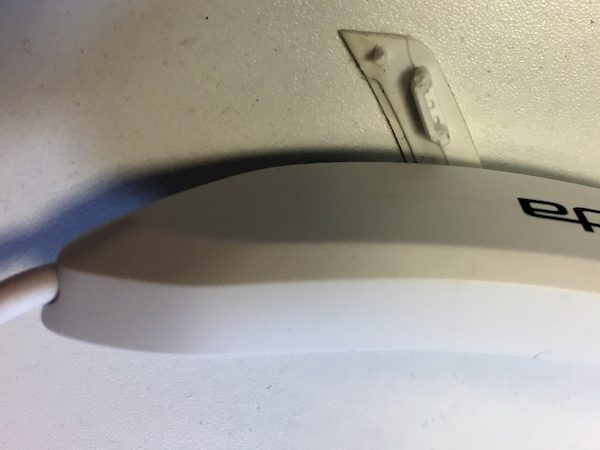
One criticism is that the door to the micro USB charging port on the base of the rear is hinged. it would be useful if the unit showed which side the hinge was on or how the cover is supposed to open.
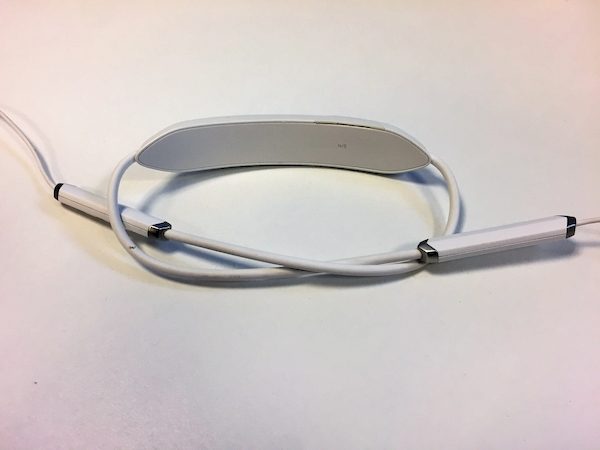
Perhaps the earphone’s most distinguishing feature, the Titanium TrapLock Ergonomics, allows the front controls to flex, to the point of being able to tie them in a knot, and still maintain the original ergonomic form. These titanium springs combine the functionality of providing power and signal wiring, the design of a freely positional collar and the style of a thin and elegant form. The connection point of the TrapLock to the rear is designed for freedom of movement, while the ferrules on the control and microphone sections are metal and securely fasten the controls to the wire.
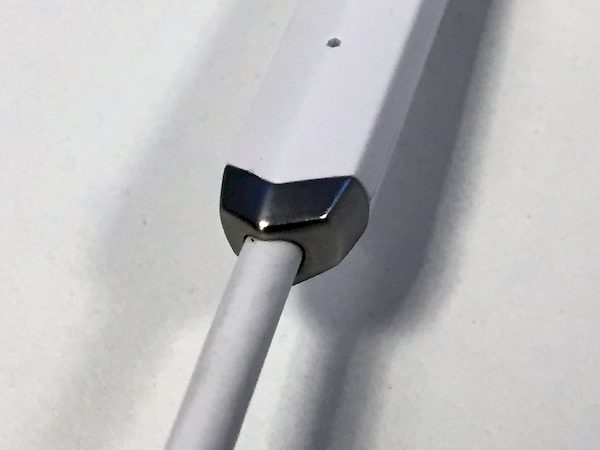
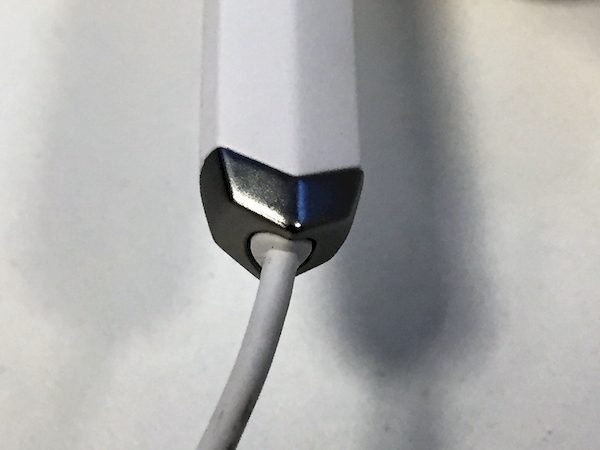
The metal ferrules are in the style of the V-Moda chevron and provide stiffness, durability, and style to the control points.
The left side control houses the power button and the status light. The status light is two color (orange and white) and indicates the charging status (a slow on/off pulse), operation (steady white), pairing mode (blinking white – entered by holding power for 5 seconds), and low battery operation (orange). When the unit is powered on the light blinks orange to indicate the approximate battery charge (once for 0 – 40%, twice for 41% – 60%, three times for 61% – 80% and four times for 81% -100%). Even the LED gets a touch of style by the fact that the port through the control casing is hexagonal. The front of each control has another metal ferrule to hold the audio wire in place. The top front of each control also has a microphone. Having two microphones allows for better audio and noise rejection during calls because the hardware can reject noise that is unbalanced and out of phase (coming from the surroundings) while accentuating the audio that is balanced and reaches the microphones at about the same time (the user’s voice). The right side control has dedicated buttons for the volume up and down and a central multifunctional button for start/pause, answer/refuse/end call, next song (two presses), previous song (three presses), and voice assist (hold for 3 seconds).
The wire to the earphone speakers looks and feels like the wire used by the Apple EarPods, although it is a true white vs a light gray color like the EarPods. Some have remarked that the wires are too long, but I think that they are just right to permit unrestricted turning of the head; any shorter and they would lift the neck collar any longer would be unnecessary. The earphone speaker housings are quite small and lightweight and fabricated from aluminum. The tight machining tolerances on these eliminates any resonance while also looking attractive. The rear of each is a hexagonal shape which gracefully transitions into a circular form toward the speaker. This design is not only stylish but also functional in that it holds the sport fins in alignment.
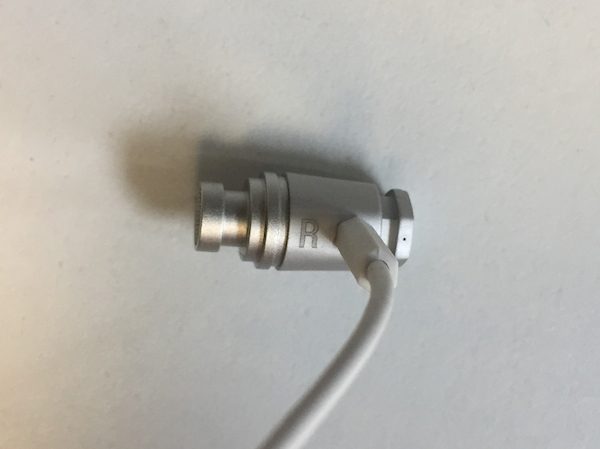 The earphones are labeled “L” and “R” on the base, but my guess is that this is just an artifact from the Forza Metallo wired design. The precision used in manufacturing these is demonstrated by the minuscule port on the rear of the earphone can.
The earphones are labeled “L” and “R” on the base, but my guess is that this is just an artifact from the Forza Metallo wired design. The precision used in manufacturing these is demonstrated by the minuscule port on the rear of the earphone can.
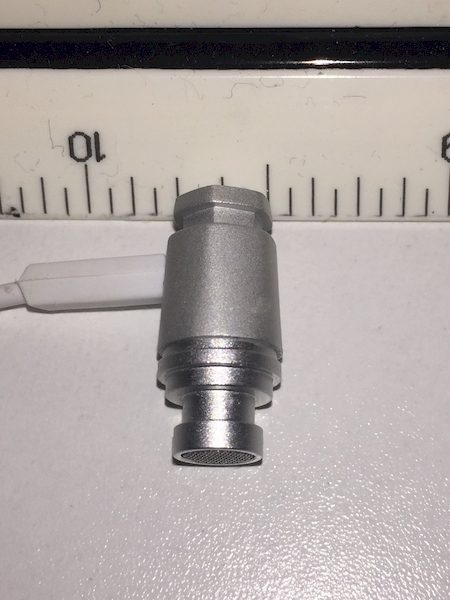
The post for the silicone ear tips is about 3/16″ if you want to get a set of compatible Compli tips.

One accessory that is not included are decorative tips that may be installed on the ends of the earphone speaker housings. They are available in a variety of designs and materials, including precious metals. Prices vary depending on the design and material used. Cap materials include platinum starting at $7,500, 14k gold at $2,500, gold plated at $250 and HD acrylic for $40 or $20 when purchased with the headphones. I think a great additional feature would be a magnetic clasp or a way to keep the earphones from rocking when they are not in your ears.
Operation
As mentioned earlier the first thing you may notice is that the power lamp indicates the remaining charge. If you discover that there is relatively little charge left, don’t despair; the earphones will provide over two hours of audio playback with only a 15 minute charge. The second thing you may notice is that the Forza does not announce the power, pairing, and connection status in one or any number of languages. Instead, it broadcasts a set of tones. While this design preserves the international appeal of the unit it also feels like at times you’re communicating with R2-D2. The earphones will also play several short beeps if the signal is lost and several longer beeps if the battery is low.
The Bluetooth paring is quick, easy, and no pass code was required (if it is requested the pass code is “0000”. The earphones will pair and connect to two devices at the same time. In order to switch devices just pause the audio stream on one device and start it on the other. If this doesn’t work then connecting/disconnecting the device may be necessary.
I noticed that my initial guess as to which ear tip I should use was a size too small and resulted in sub-optimal bass. The next size up fixed the problem but this is a good warning that you should try a couple of sizes of tips to ensure the best fit and bass response.
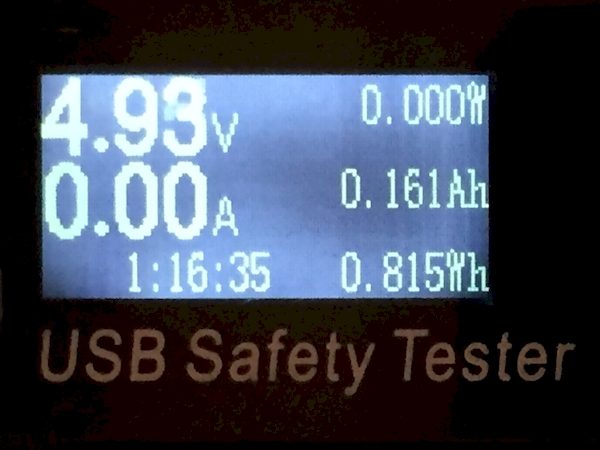
A full charge took 1:16 and lasted for more than a day of use.
One unique feature of the Forza is that incoming calls to the connected audio device will cause the neckband to vibrate. The vibration feature is useful if you wearing the Forza and connected to a phone but do not the earphones in your ears. The vibration also works when the headphones turn on and when they go to standby.
Performance
Before getting into the audio I need to explain how comfortable these earphones are. They are very lightweight and are barely noticeable when being worn. In my experience, the wires to the earphones don’t quite hang as freely as they do on the model below but maybe over time, the cord will straighten out.
I’ve gone on several runs with this and have never had a problem with the neckband slipping off or the earphones becoming sweat-logged.
I have noticed one or twice that the neckband will slip off my shirt, but this only happened if I was rocking in my chair or if the neckband got pushed back by my shirt collar.
The audio out of these is just stunning. I’m surprised such small drivers can deliver such amazing sound. From a purely technical standpoint, my 40+ year old ears could hear from about 19Hz to 1,4260Hz using http://onlinetonegenerator.com/. I have very little doubt about the technical capabilities of these drivers since they are the same ones used in the certified Hi-Res Forza Metallo wired earphones. Also, once the correct ear tips are installed there is a significant level of passive noise reduction.
I wanted to test the sound using a variety of genres and soundscapes. My first test track is Fantasy by The xx. The pure base tones (in the high 40Hz range) come through strong and without distortion. I also listened to How Low by Ludacris which has some 32Hz tones that come through well amplified. Listening to each of these songs is enjoyable and the bass is delivered just fine on each. However, these headphones are Hi-Res (even if they aren’t certified as such) so they have a relatively flat response profile. Adjusting the bass on the playing device can bring these close to Powerbeats but they are not the same type of headphone. If you really like overpowering bass then Powerbeats are for you but if you want to hear the bass and everything else in a song then the Forza is a great selection.
I wanted to hear how the subtly of an upright bass is delivered by the speakers so I listened to Bahia by John Coltrane. The earphones captured the tone of all the instruments beautifully. This song is also good to test the soundstage of the earphones. It is easy to imagine yourself surrounded by a piano, a sax, a bass and a drum from left to right. Another great song to appreciate the soundstage is There’s No Underwear in Space by The Claypool Lennon Delirium. In this song, you can hear the eechoesof drum and bass against the other sounds in this ominous sounding recording. It sounds like Les is using a bow on his bass on this and he gets some amazing sounds out of it; thanks to these earphones you can hear it all in amazing clarity.
The song La femme d’argent by Air is full of lush and vibrant sounds and the earphones do a great job at reproducing the swirling electronic sounds and hypnotizing melody. If you close your eyes you can really loose yourself to the music and not know where you are!
The recently recorded French Suites by Bach played by Murry Perahia is an excellent recording and shows how versatile the earphones are. It’s easy to enjoy the classical piano of this recording right after playing the above song by Ludacris, and they both sound great.
One more recording is the one I made myself.
I recorded this audio on my computer. Compared to the audio made by the Dell Realtek Audio, which was not set up for adaptive noise reduction, the recording by the Forza Metallo sounds a bit more muffled, but clear and free of the background noise that was being (purposely) made by one of my children. The incoming call quality is as good as I’ve heard on any wireless earphone set.
Conclusion
The Forza Metallo Wireless earphones are a great sounding set of wireless earphones that rival the sound produced by many wired earphones. They are comfortable to wear and quick to charge. They are a little expensive at $170, but not out of the range that competitive devices are priced at. They also come with a 1 year warranty and a lifetime 50% discount on comparative products from the V-MODA product line if your own Forza Metallo Wireless is damaged beyond repair. The style, design, and features make these great earphones and I fully endorse them.
Source: The sample for this review was provided by V-MODA. Please visit their site for more information and Amazon to check prices / order.
Product Information
| Price: | $169.99 |
| Manufacturer: | V-MODA |
| Retailer: | Amazon |
| Requirements: |
|
| Pros: |
|
| Cons: |
|
Filed in categories: Reviews
Tagged: Bluetooth headphones
V-MODA Forza Metallo Wireless Bluetooth headphone review originally appeared on The Gadgeteer on September 5, 2017 at 4:44 pm.
Note: If you are subscribed to this feed through FeedBurner, please switch to our native feed URL http://the-gadgeteer.com/feed/ in order to ensure continuous delivery.

